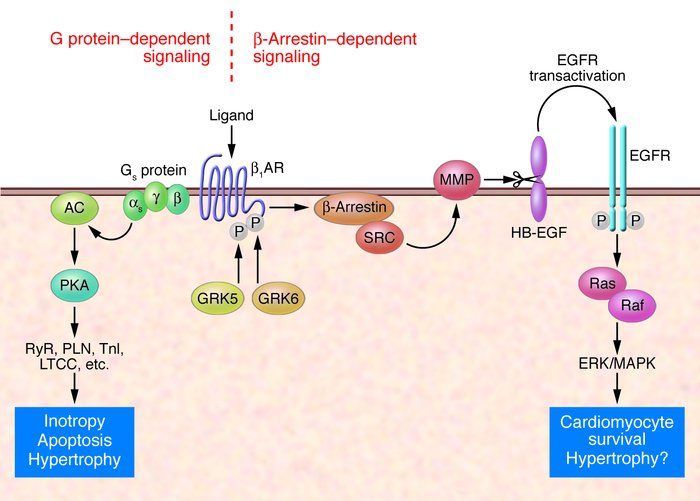Citation Information: J Clin Invest. 2007;117(9):2396-2398. https://doi.org/10.1172/JCI33135.
Abstract
Acute stimulation of cardiac β1-adrenergic receptors (β1ARs) by norepinephrine represents the strongest endogenous mechanism for increasing cardiac function, but long-term stimulation induces cardiomyocyte apoptosis and contributes to cardiac disease. These effects have been attributed to coupling of the β1AR to the stimulatory G protein (Gs) and classical cAMP-mediated signaling. In this issue of the JCI, Noma and colleagues report that cardiomyocyte β1ARs may in addition deliver an antiapoptotic signal through transactivation of EGFRs (see the related article beginning on page 2445). Their findings provide a perspective for a novel class of receptor ligands that may direct β1AR signaling toward alternative signaling pathways.
Authors
Stefan Engelhardt
Figure 1
β



Copyright © 2025 American Society for Clinical Investigation
ISSN: 0021-9738 (print), 1558-8238 (online)

